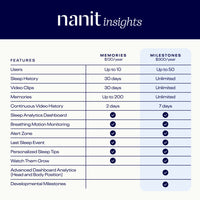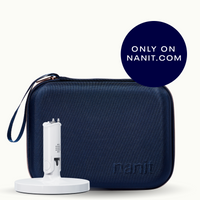Key Takeaway:
Today’s parents are recalibrating how they spend—especially on their little ones. With economic uncertainty top of mind, the majority are shifting away from impulse purchases and leaning into what matters most: safety, longevity, and trust. As one parent shared, “Uncertainty will probably cause a major delay in spending.” This sentiment is echoed by others, who are becoming more deliberate with their purchases. Another parent said, “I am reading a lot more reviews and seeking multifunctional items. For example, not just a baby monitor, but a humidity and temp gauge. Not just an air filter, but also a sound machine and night light. As prices go up, folks want their purchases to mean a bit more.”
What We Learned
1. People Are Spending More Carefully
-
58% are being more cautious or selective with their purchases
-
21% are pausing non-essential buys
-
Only 17% are spending like usual
Takeaway: The majority of families are tightening their wallets, which shows a dip in consumer confidence. A parent noted, “When it comes to safety or a NEED, price won't be a huge factor. If it's a WANT, then price will play a part in the decision making.”
2. Tariff Concerns Are Real
-
49% are very worried about price increases
-
39% are somewhat concerned
-
Just 2% say they’re not worried
Takeaway: Most families are feeling the pinch—or bracing for it.
3. Tariffs Are Changing How Families Shop
-
61% are spending less overall
-
57% are delaying purchases
-
38% are switching to more affordable brands
-
29% are turning to secondhand
-
34% are buying early to beat price hikes
Takeaway: Shoppers are adjusting in smart, creative ways to stretch their budgets. “I’d rather buy something that will grow with my child over something they’ll outgrow in three months. Quality matters, and so do loyalty programs or subscription discounts.”
4. Baby Products Get a Closer Look
Spending on baby items mirrors general spending habits:
-
39% are more cautious
-
25% are putting off non-essentials
-
Only 31% are spending as usual
-
A parent shared, “With so many new brands and products, safety is a main concern. Having long lasting products and ones with a good reputation is important with so much expensive equipment.”
Top Essentials (Must-Haves):
-
Diapers & wipes – 91%
-
Car seats – 83%
-
Feeding supplies – 79%
-
Cribs & bassinets – 55%
-
Baby monitors – 50%
How Parents Are Saving:
-
30% wait for sales
-
18% explore budget-friendly alternatives
-
Clothing & toys? Many are open to secondhand or gifts
Takeaway: Essentials stay essential, but families are strategic when and where they can be. One parent explained: “I've always tried to buy secondhand—except for car seats and health monitors. For safety and sustainability, those are worth the price. But fun items like toys or cute outfits? Definitely not a priority.”
What Parents Are Telling Us
There’s a strong call for brands to:
-
Keep prices stable if possible (71% agree)
-
Be honest and transparent about any changes (62% agree)
-
Explain the "why" behind price increases (54% agree)
When prices do go up:
-
37% say they’ll still consider buying—but they’ll be disappointed
-
34% will look for more affordable options
-
Only 20% fully understand the reasons behind price hikes
In their own words:
Parents are asking for empathy and transparency. Many feel baby products should be protected from sharp price jumps.
One parent shared, “If the administration wants more people to have children, we need childcare reform, paid leave, and a removal of tariffs on baby goods.” Another added, “Tariffs are pushing parents to skip essential products because of the cost.” Yet another said, “The rising costs are making it harder to have a baby, especially for young families or those without the support of loved ones to help cover baby product expenses.”
What Companies Can Do Right Now
-
Be transparent about pricing and what’s driving changes
-
Reward loyalty with discounts, early access, or added value
-
Offer flexible options like phased pricing or product bundles
-
Educate consumers about product quality, longevity, and value
-
Introduce tiered pricing to meet different budgets
The Bottom Line
Consumers—especially parents—are highly responsive to economic pressures like tariffs, which are influencing how families plan, budget, and shop. Many parents are adjusting their behavior, particularly when it comes to baby products, where emotional and safety considerations make price alone a complicated factor. As one parent put it, “When a brand shows they care, that matters. Especially right now.” This highlights the deeper truth: “If children and families are so important to the health of our nation, we should begin supporting them to ensure universal success.” Tariffs are more than just a policy issue—they are reshaping family priorities, but for brands that lead with empathy, transparency, and care, there’s a real opportunity to build lifelong loyalty.







































